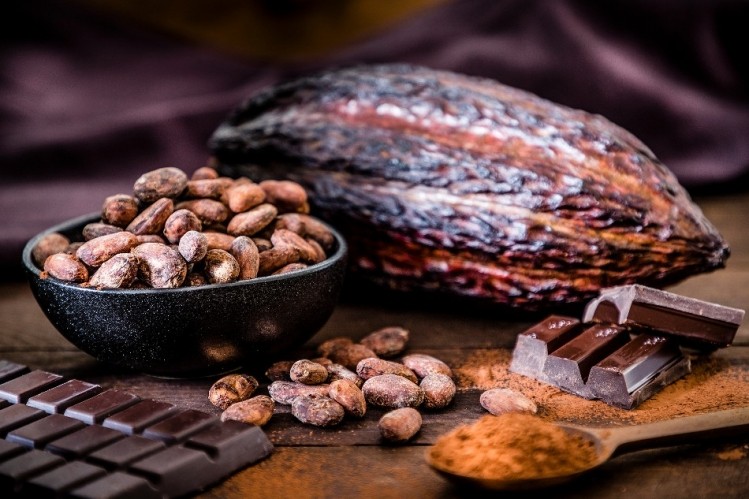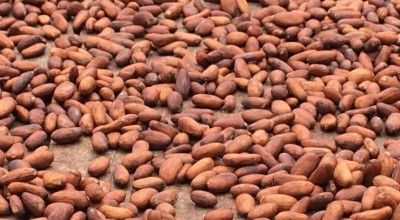Guest post
From bean-to-bar to cosmetics, cocoa market looks ripe for expansion in next 10 years

Cocoa is also used at a significant rate in the nutraceutical, pharmaceutical, healthcare, and cosmetics industries as a colouring and flavouring agent. Furthermore, cocoa is utilized for the manufacturing of toiletries due to its excellent flavour and aroma. Thus, increasing use of cocoa across various industry verticals is likely to serve as a noticeable factor propelling the sales opportunities in the cocoa market.
- Here are some of the key finding from the FACT.MR's market research report on the Cocoa market
A Revitalizing Element: Cocoa to be Fruitful for Local Farmers in Africa as Trend for Bean-to-Bar Production Burgeons
Cocoa is an incredibly important crop with a rich history and it is a leading global commodity used to make chocolate, cocoa powder, and cocoa butter. The cocoa industry is vast and complex, encompassing every aspect- right from its production to its consumption.
After colonization by Spain in 1492, cocoa was brought to Europe and eventually spread across the globe. Today, cocoa is grown primarily in Africa, followed by South America and Asia Pacific. According to the American Phytopathological Society, cacao is a tropical commodity crop grown by around 6 million small-scale farmers.
Cocoa is widely used across the food industry worldwide. Chocolate is undoubtedly the most popular use of cocoa beans. A variety of diseases can be treated using cocoa. It helps in the management of one’s immune system and decreases blood pressure. It also reduces the chance of heart attack, inflammation, neuroprotection, oxidative stress, obesity, and diabetes.
Nourishment in a Bittersweet Package: Cocoa has Ability to Reduce Inflammation associated with Heart Disease
Cocoa powder has numerous health benefits, making it a popular choice for those looking to incorporate it into their diet. As per the National Library of Medicine, cocoa is packed with antioxidants. These can help reduce inflammation, improve brain function, and boost heart health. These features would enable millennials to try out new cocoa-based products to keep themselves fit and healthy.
It is also high in magnesium, which can help reduce stress levels, strengthen bones & teeth, and regulate blood sugar levels. Cocoa contains several important vitamins and minerals such as zinc, iron, calcium, vitamin B2, and vitamin C. These are beneficial for an individual’s overall wellbeing.
Forest and Farmer Friendly Cocoa Production in Africa to Open Door to New Opportunities
Cocoa is an important export product for numerous countries, especially those in Africa. Currently, the Ivory Coast and Ghana produce a significant amount of cocoa in the world. Other producers include Indonesia, Nigeria, Brazil, and Ecuador. By investing in cocoa production, these countries are able to benefit from the economic boost of this lucrative industry.
According to the International Cocoa Organization, Africa, which accounts for 77% of global cocoa output, is likely to remain a prominent cocoa producing area. Proportions of Oceania, Asia, and the Americas are predicted to be 6% and 17%, respectively.
In West African countries such as the Ivory Coast and Ghana, chocolate has become a national symbol. It is also considered to be an integral part of their culture. As a result, government and non-profit organizations have implemented numerous initiatives aimed at helping local farmers develop sustainable practices that will ensure long-term success.
Is Cocoa Butter a Holy Grail for Skin Restoration and Moisturization?
Cocoa butter is a popular ingredient in numerous skincare products due to its moisturizing and protective properties. It helps to reduce wrinkles, lower skin dryness, and prevent chapping & cracking of the skin. Cocoa butter is also rich in antioxidants, which help to protect the skin from environmental damage.
For instance, in December 2022, Himalaya Wellness Company launched its latest campaign. It is called ‘#DrySkinFeelsBetterWithHimalayaCocoaButter.’ The campaign is under the company’s popular winter-care range. It emphasizes the significance of plant-based glycerine, wheat germ oil, and cocoa butter for moisturizing and calming one’s skin.
Cocoa butter’s anti-inflammatory properties can aid in reducing redness and irritation caused by certain conditions, such as eczema or psoriasis. Moreover, cocoa butter can be used to soothe sunburns, as it can penetrate deep into the skin layers to replenish moisture levels.
From Hot Bombs to Creams and Soaps, Cocoa to Gain Traction among Modern Millennials
From classic hot cocoa to skin creams and smoothies, cocoa is nowadays used to make a wide range of products. Its uses span from creating delicious desserts and chocolates to providing medical benefits.
Cocoa is used in baking products such as cakes, cookies, brownies, and ice creams. It is also utilized in various beverages such as hot cocoa and mochas.
In September 2022, for instance, San Francisco-based Alter Eco joined hands with A Dozen Cousins, which is a heat-and-eat side dishes manufacturing brand headquartered in Los Angeles. They are aiming to create limited-edition culturally inspired hot cocoa bombs.
These bombs will be sold during the Hispanic Heritage Month online. A few innovative flavours include Mexican hot chocolate and white chocolate coquito. These can be added to hot milk to develop an indulgent and a warm beverage.
Furthermore, cocoa is often used in cosmetics such as lotions, creams, and soaps. Cocoa butter is a common ingredient in numerous beauty products due to its nourishing and hydrating properties. It is also extensively used as an anti-aging ingredient as it helps to reduce wrinkles and age spots.
Cacao might offer comfort to the skin by momentarily shielding one’s harmed or exposed skin from unpleasant or irritating stimuli. By creating a barrier on the skin's surface, cacao also reduces the skin's loss of water.
Cocoa Companies Follow the Footstep of Hershey to Supply 100% Direct-Sourced Cocoa
In recent years, various companies have started to recognize the importance of being socially responsible in their cocoa production. Cocoa companies are striving to promote sustainability, fair wages, and ethical labour practices.
For instance, the Hershey Co. expanded its ‘Cocoa for Good’ programme. By 2025, it has committed to around 100% direct-sourced cocoa, especially in areas with high risk. It will consider all the cocoa sourced from Ghana and Cote d’Ivoire by its suppliers.
A few other companies are also working on developing sustainable harvesting methods that reduce environmental damage, while also maintaining quality standards. This helps them support the livelihoods of farmers and protect the future of cocoa production.
Will the Cocoa Industry Prove to be Profitable for Local Farmers by 2032?
The cocoa industry is set to continue to thrive in the next 10 years, with advancements in sustainable farming practices and increasing global demand for cocoa products. The industry is becoming highly innovative, with new product ideas and uses emerging worldwide.
For instance, in October 2022, Barry Callebaut, a high-quality chocolate manufacturer based in Zürich, introduced a new chocolate bar. It is a result of more than 20 years of research work in the field of cocoa beans.
The new bar has 60% to 80% more cocoa than traditional chocolates. It also contains 50% less sugar compared to other existing chocolate bars. The company has discovered a novel way of cultivating cocoa. It ferments and roasts cocoa beans to lower their bitter taste.
Millennials are also looking to purchase such sustainably-sourced and unique cocoa products, which is encouraging farmers to move toward sustainable practices. As a result, the cocoa industry looks profitable and would create new opportunities for small-scale cocoa farmers.
- Shambhu Nath Jha is Associate Vice President, Fact.MR








